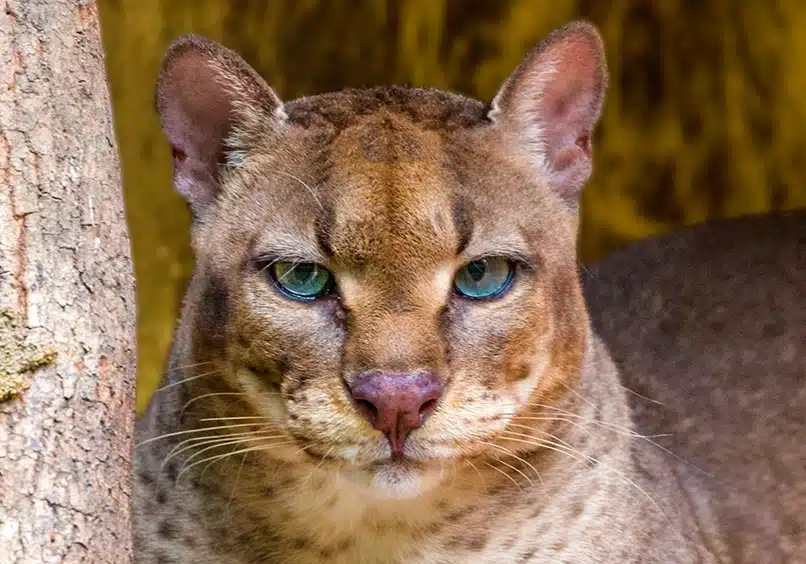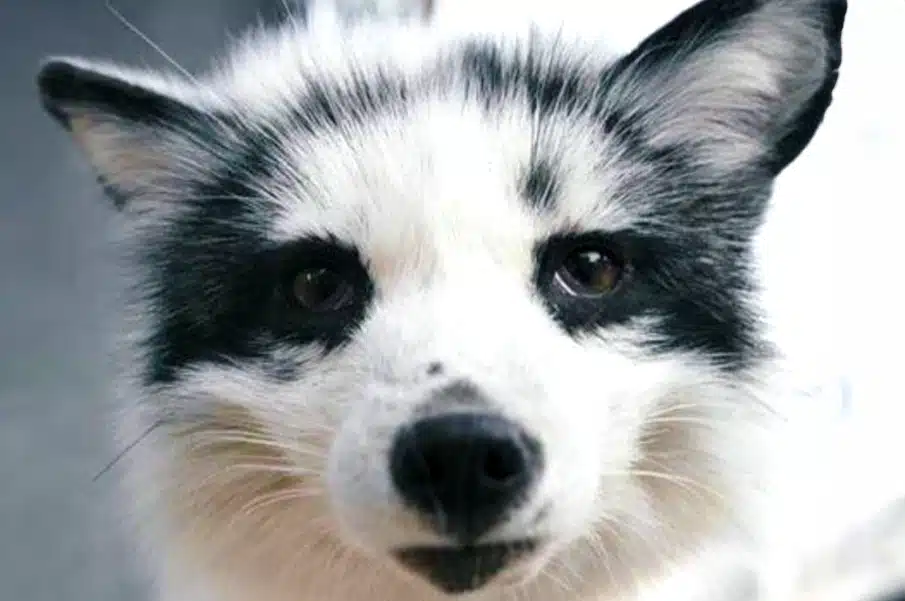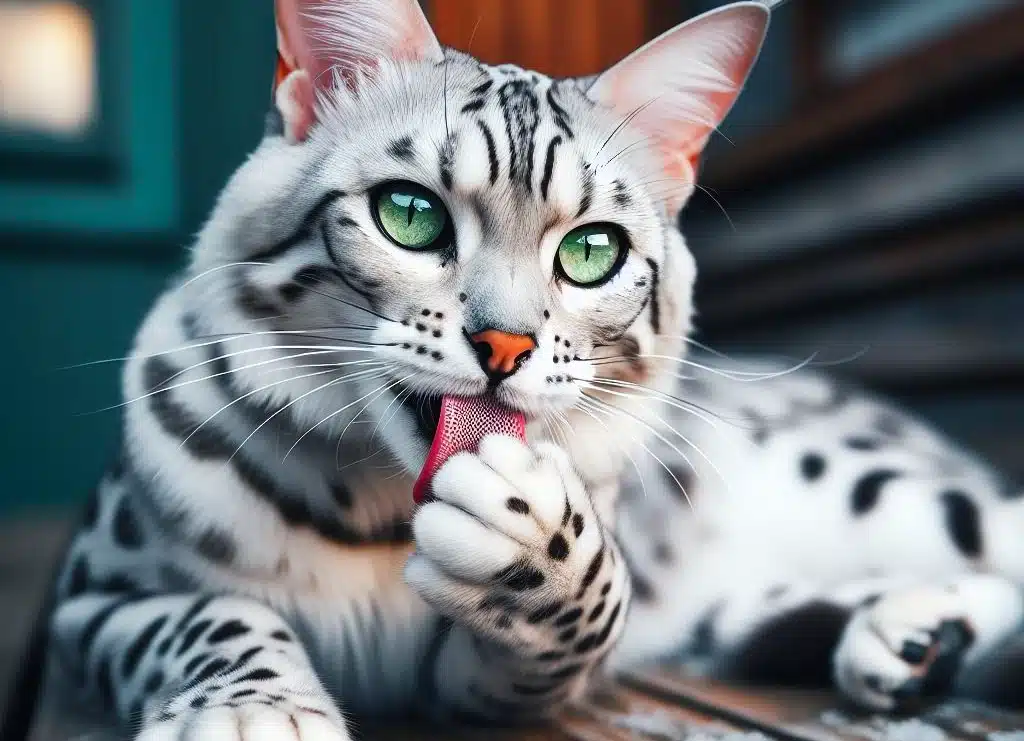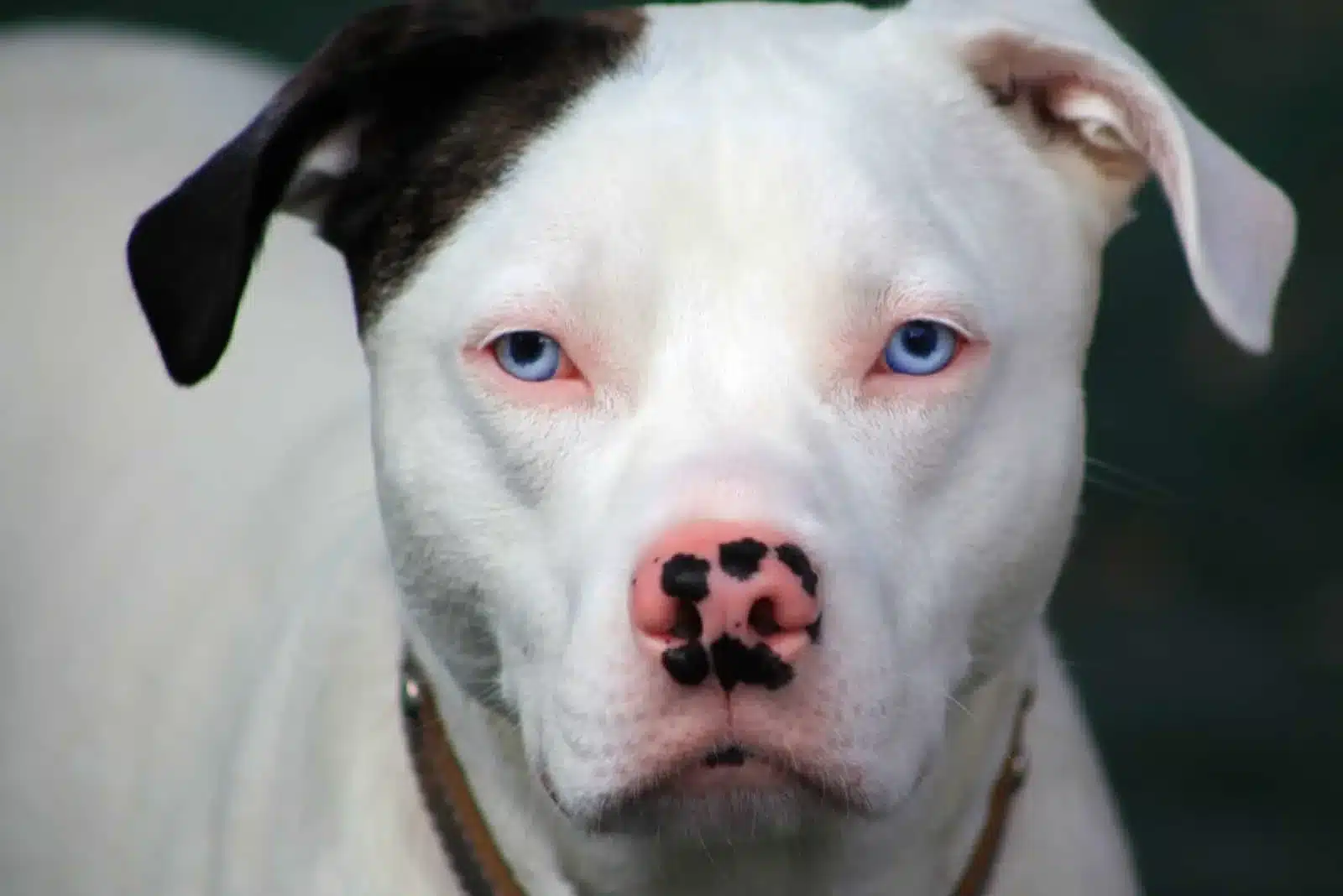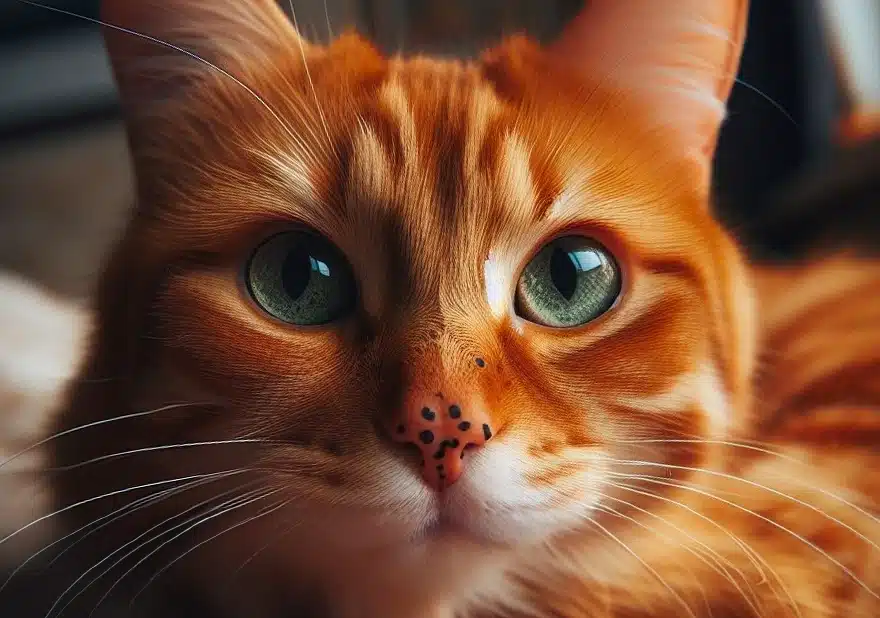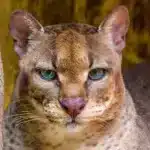Chimera Animals: When An Animal Is Its Own Twin (Examples and Photos)
Ads Disclosure ?
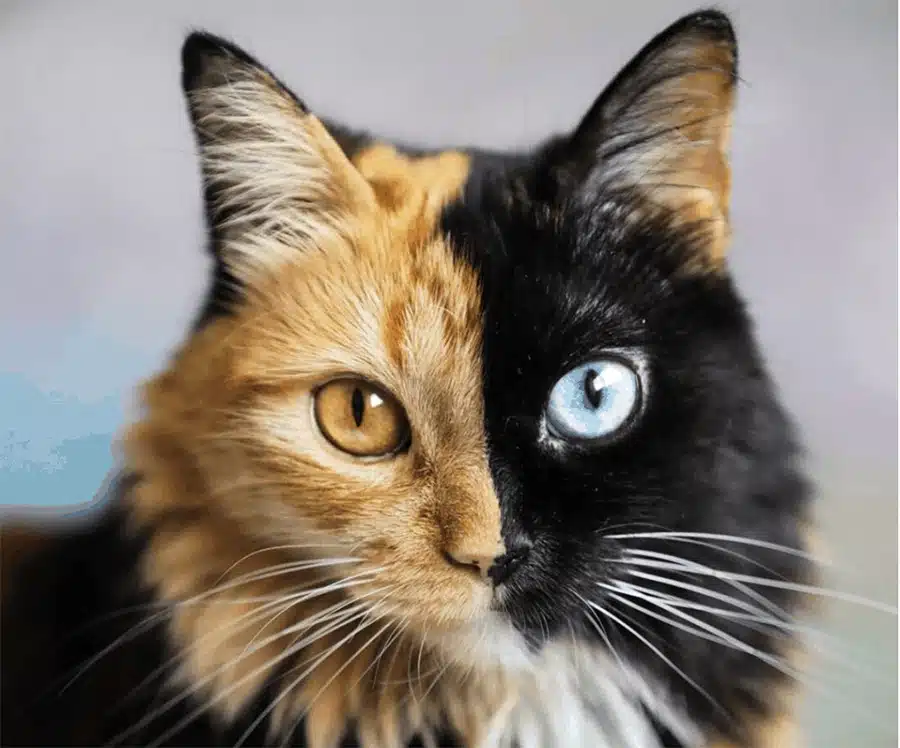
Chimeras have long captured human fascination, drawing their name from a creature of Greek mythology composed of parts from different animals. In the realm of genetics, however, a chimera refers to an organism that contains genetic material from two or more distinct sources. This phenomenon arises when more than one set of DNA is present in an animal, making them genetically distinct within their own body. It is a natural occurrence in some cases, while in others, it is the result of scientific manipulation aimed at understanding complex biological processes or for medical purposes such as the growth of human cells or organs for transplantation.
The exploration of chimeric animals continues to contribute significantly to the advancement of genetics, regenerative medicine, and our understanding of interspecies genetic expression.
Unlike the hybrid creatures of lore, real-life chimeras do not bear the exaggerated attributes of monsters. Nonetheless, they are absolutely fascinating.
Jump To Section
What is a Chimera
A chimera is an organism with a unique blend of cells from different zygotes, leading to the presence of multiple sets of genetic material. This can occur naturally or be engineered in a laboratory.
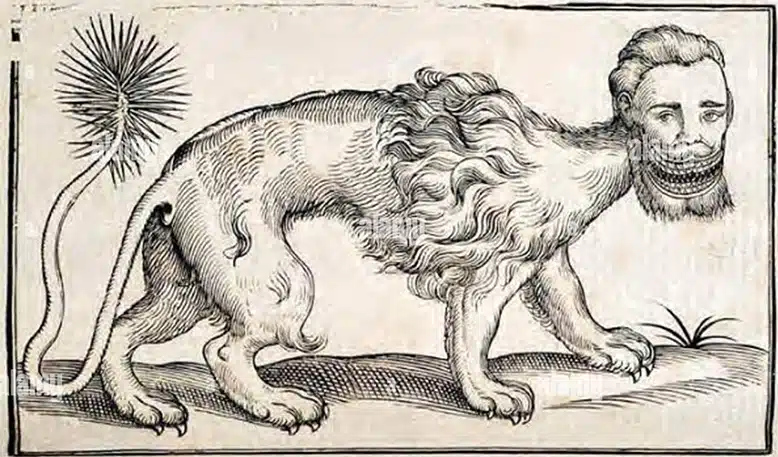
Genetic chimerism
Genetic chimerism refers to a condition where an individual has two or more different sets of DNA. This occurs when two or more embryos fuse together during the early stages of development, resulting in a single organism. The phenomenon is named after the chimera of Greek mythology, a creature composed of parts from various animals.
- Natural Chimerism: This can happen in cases of fertilization anomalies, such as fraternal twins where cells from one embryo are incorporated into the other. The resulting individual is a composite of these cells, which can lead to visible variations in pigmentation or more subtle physiological differences that may go undetected.It can also occur in conditions where a twin embryo does not fully separate during development (a parasitic twin), and some cells from one twin end up in the body of the other.
- Microchimerism and Tetragametic Chimerism: Microchimerism is a form of chimerism where a small number of cells from a different individual exist within the main host, which can occur naturally through the exchange of cells between mother and fetus or through blood transfusion. In contrast, tetragametic chimerism is a type where the individual is formed from the fusion of two distinct zygotes, which can result in more pronounced genetic differences within the individual.
Man-made chimerism
Laboratory-induced chimerism is actively researched for its potential in medical advancements. With the use of pluripotent stem cells, scientists can create chimeric organisms for various purposes, including:
- Chimeric Mice: These mice are commonly used in research to study genetics, cancer, and other disease processes. They are created by incorporating human cells into mouse embryos, allowing researchers to observe the effects of human genes and diseases in a controlled environment.
- Human-Animal Chimeras: Creating hybrid organisms by introducing human cells into animal embryos aims to understand human disease mechanisms and develop new treatments. Human-animal chimeras can also be used to grow human organs in animals for transplantation purposes, potentially addressing the shortage of available organs for transplant patients.
Both cancer and organ transplant research look to chimerism as a crucial area of study. Cancer often involves the growth of cells with mutated genetic material, forming a sort of “natural” chimera. Understanding mosaic patterns in such cells can provide insight into the development and treatment of the disease. Meanwhile, transplantation science investigates how chimeric tissue may aid in the acceptance of organ transplants, with the goal of reducing the risk of rejection.
Chimeric Animals
Chimeric animals result from the amalgamation of two or more genetic lines, leading to individuals with cells from different zygotes. They often display distinct physical characteristics indicative of their mixed genetic origins.
Chimeric Cats
Chimeric cats are known for their distinctive facial markings, often appearing as if they have two different faces split down the middle. The most famous examples are cats with half of their face possessing one color and the other half a different color, sometimes giving the appearance of two separate cats merged into one.
A famous example is Venus the Chimera Cat, seen below.
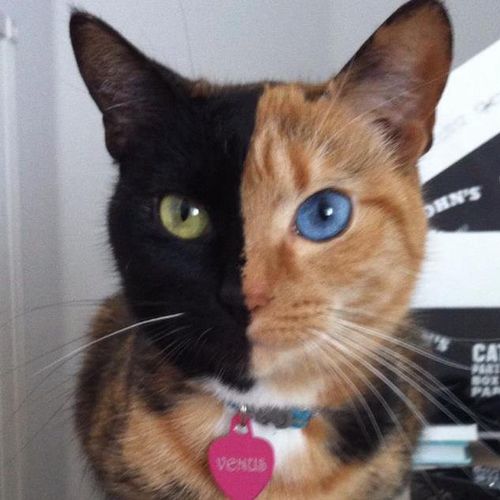
Dog Chimera
Chimerism in dogs can sometimes be identified through distinct coat patterns or eye coloration. However, it is often less visually apparent in dogs compared to other animals, making it harder to initially recognize without genetic testing.
This unique yellow lab named Bull is suspected to be a Chimera, a single dog that genetically is two animals (an individual that is its own twin).

Chimeric Fish
In fish, chimerism can occur naturally, contributing to their biodiversity. For instance, certain anglerfish exhibit symbiotic chimerism, playing a vital role in their life cycle and reproductive strategies.
Pearl Zebra Cichlid is chimeric, with one red albino eye, and one “normal” black eye.
Chimera Axolotl
The axolotl can display chimerism through genetic manipulations, resulting in specimens with patches of different colors on their bodies. This is particularly striking given their regenerative abilities, with chimeric individuals sometimes regenerating tissue of different coloration.
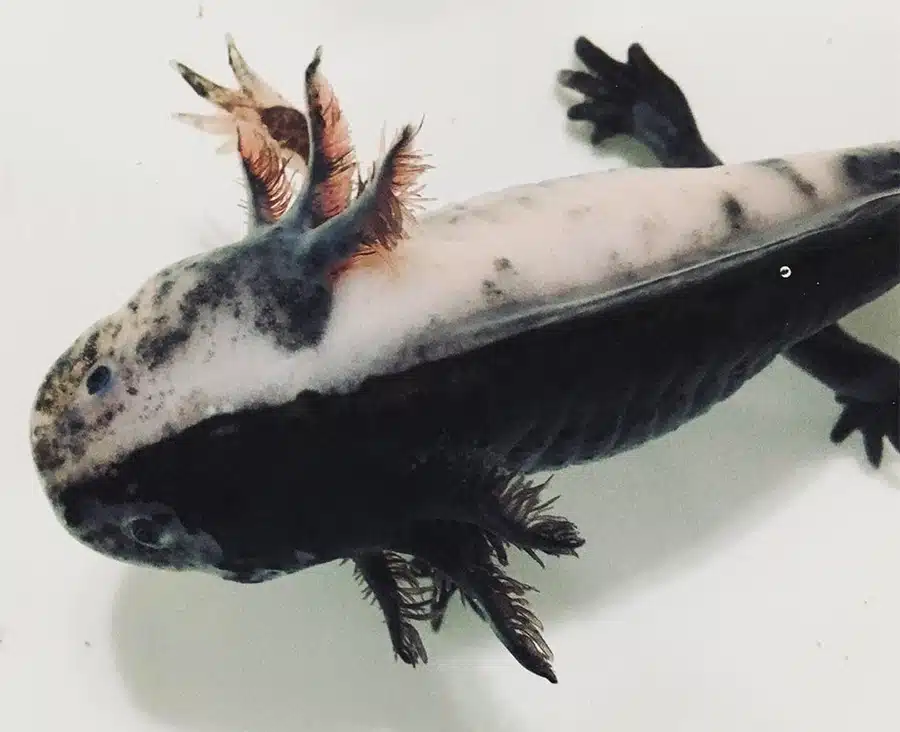
Chimera Horse
Chimerism in horses is rarer but can lead to animals with coats showing patches of distinctly different colors. A chimera horse may display characteristics that reflect the genetic diversity of multiple embryos fused together, such as bi-colored eyes or abnormal hair growth.
The coat of a chimera horse can have sections that vary in color and pattern (for example, unusual splashes of color), leading to a striking and uncommon appearance. This is because the cells that form the coat come from different cell lines.

Chimera Ball Python
The ball python is a species where chimerism can result in unique patterns and color variants. Breeders sometimes specifically select for these traits to produce individuals with highly sought-after aesthetic qualities.
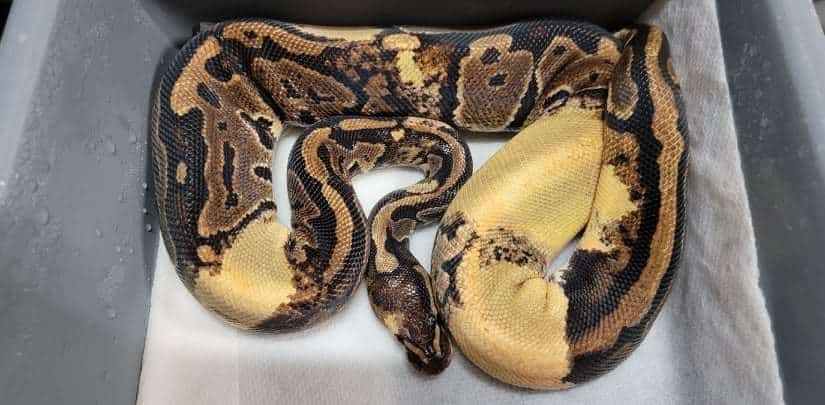
Chimeric Mice
Chimeric mice are common subjects in genetic research due to their ability to be engineered to express genetic materials from different sources. They serve as important models in studying gene function and disease.
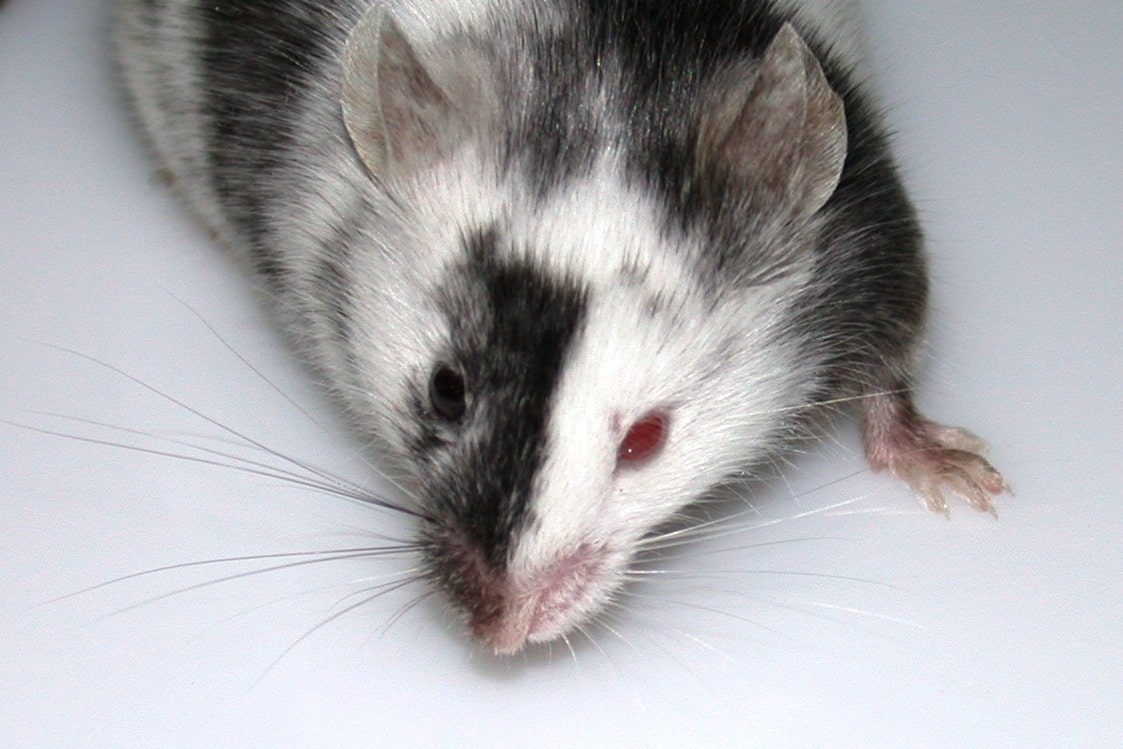
Chimera Lobster
Occasionally, lobsters are found with chimerism, displaying a split-color shell, often in a strikingly symmetrical pattern. Such lobsters have become a fascination for scientists and the public alike due to their rarity and unusual appearance.
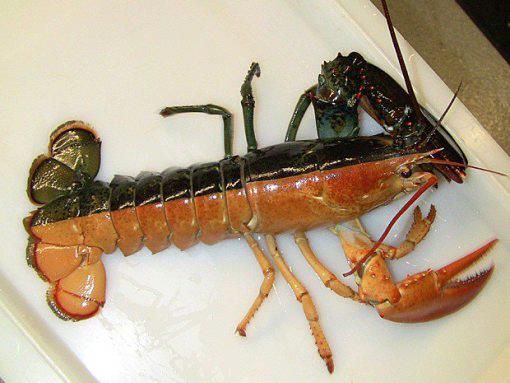
Chimera birds
This parakeet is a Chimera, and is essentially its own twin.

Chimeric rabbit

Bilateral Gynandromorphs: An Even Rarer Form of Chimerism
What is Bilateral Gynandromorphism
Bilateral gynandromorphism is an even rarer form of chimerism in which the chimeric individual has cells with distinct sex chromosomes (such as XX for female and XY for male in many organisms) that are distributed in a roughly bilateral pattern.
In other words, a bilateral gynandromorph is an organism that exhibits both male and female physical characteristics, divided bilaterally. This means that one side of the organism’s body is male, and the other side is female. In the specific case of bilateral gynandromorphism, the chimerism is usually the result of a sex chromosome segregation error during the early cell division of a fertilized egg. This results in two distinct cell lines, one with male and the other with female characteristics, which then divide and grow in a bilateral pattern, leading to the distinct half-male, half-female appearance.
It’s important to note, of course, that while gynandromorphism is a type of chimerism, not all chimeras are gynandromorphs.
Bilateral Gynandromorphism in Birds
This condition is most commonly observed in insects, such as butterflies and moths, but it can also occur in birds and crustaceans. This bicolored Northern Cardinal is a bilateral gynandromorph – half male, half female:

Bilateral Gynandromorphism in Insects
In insects, this can lead to striking differences, with one wing displaying the coloration and patterns typical of males and the other wing showing female characteristics. In birds, one side might have the bright plumage typical of males, while the other side has the more subdued coloring typical of females.
For example, this Common Blue butterfly:
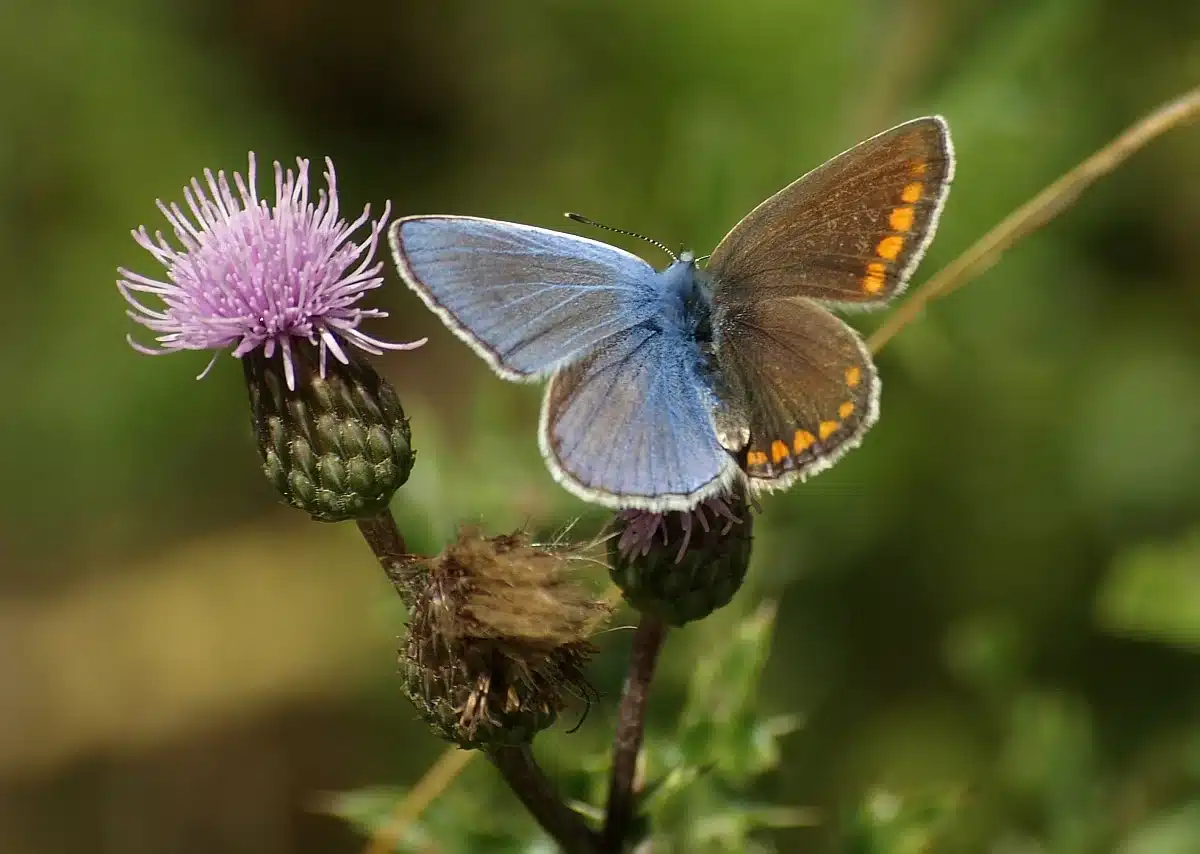
Historical Context and Mythology
The Chimera’s tale is a fusion of ancient legends and cultural representations that have evolved through time.
Greek Mythology and Legends
In Greek mythology, the Chimera is depicted as a fire-breathing beast born from Echidna and Typhon, both legendary monsters themselves. It possessed the front body of a lion, the midsection of a goat, and the rear of a dragon or snake. This fearsome composite creature was believed to reside in Lycia, terrorizing its inhabitants until it met its demise at the hands of the hero Bellerophon, who was aided by the winged horse Pegasus.
The Chimera’s mythological roots trace back to ancient texts like Homer‘s Iliad, where it was first described in detail, and later references by authors such as Hesiod, Pindar, and Ovid. These texts often used the Chimera as a symbol of insurmountable challenges overcome by heroes. For instance, in the Iliad, the Chimera is characterized as a sibling to such terrifying creatures as Cerberus and the Nemean Lion, reinforcing its image within the mythology as a being of formidable strength and terror.
Cultural Depictions Through Art and Literature
Throughout history, the representation of the Chimera has been a popular subject in art and literature, signifying the amalgamation of the real and the fantastical. It featured in Etruscan art, where it was frequently portrayed in bronze statuary, often with a fierce expression capturing its menacing nature. The image of the Chimera extended into the works of Virgil, where in the epic Aeneid, the creature’s symbolic resonance is interwoven with the fates of empires and heroes.
The motif of the Chimera persisted into the Roman period, where writers like Pliny the Elder contributed to its legacy. In his work Natural History, Pliny mentions the Chimera in discussions of natural wonders and creatures. Furthermore, parallels to the Chimera can be found in other mythological hybrids like the Sphinx, suggesting a broader cross-cultural fascination with composite creatures.

Frequently Asked Questions
What constitutes a chimera in genetics, and can it occur naturally?
A chimera in genetics is an organism with cells from two or more different species. While most chimeras are generated through scientific methods, they can occur naturally, such as in some plant species and the occasional animal hybrid.
Are there ethical or legal reasons that limit the creation or study of chimeras?
The creation and study of chimeras is a subject of ethical debate due to concerns about the nature and rights of these organisms. Legal restrictions vary by country, but generally, guidelines are in place to ensure ethical research practices and the welfare of the animals involved.
In what ways might chimeras be used in medical and scientific research?
Chimeras have the potential to advance scientific understanding in various areas, such as developmental biology and genetics. They are also seen as a promising avenue for growing human organs for transplantation, improving disease models, and testing drug efficacy.
How does chimerism in humans differ from that in animals, and what are its implications?
Human chimerism typically involves the presence of two or more populations of genetically distinct cells that originated from different zygotes. This can result in subtle genetic differences within the same individual. In contrast, animal chimeras created in laboratories may have more pronounced genetic dissimilarities and can help us to understand human diseases and development.


